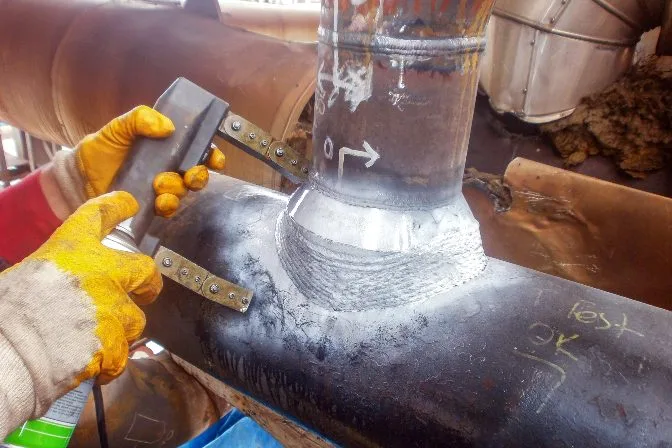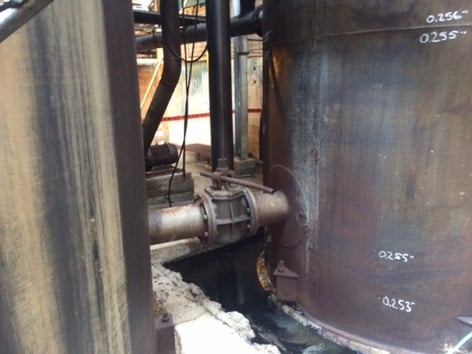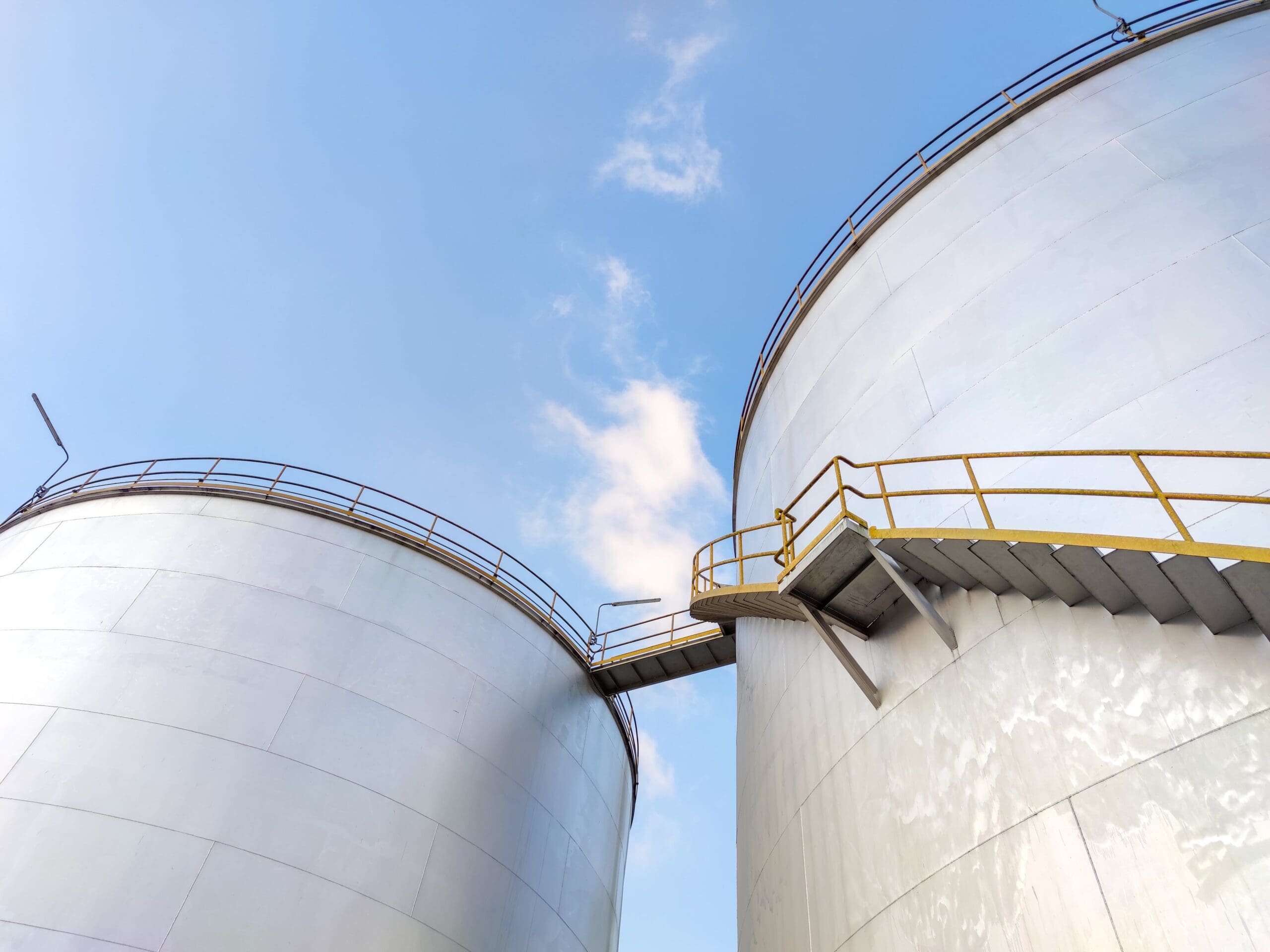A Detailed Introduction of Storage Tank Welding Assessment Criteria and Methodologies for Improved Weld Quality and Efficiency
The value of welding assessment requirements in the manufacturing of containers can not be overemphasized, as they serve as the foundation for making certain weld stability and functional integrity. Different evaluation methods, consisting of visual assessments and progressed non-destructive testing techniques, are vital in determining potential imperfections that can compromise performance.
Importance of Welding Evaluation Standards

Welding assessment requirements include an array of standards, consisting of product requirements, welding treatments, and qualifications of workers associated with the welding process. By imposing these criteria, organizations can methodically identify and rectify potential defects, consequently minimizing the likelihood of costly repairs or devastating failings. Additionally, rigorous assessment techniques cultivate a society of liability and precision, motivating welders to maintain high levels of craftsmanship.

Common Welding Assessment Strategies


Ultrasonic Testing (UT) is one more widespread technique, using high-frequency sound waves to identify inner imperfections that might not be noticeable externally. This technique is especially efficient for determining voids or additions within the weld steel. Magnetic Bit Evaluating (MT) is likewise commonly used, particularly for ferromagnetic products, as it reveals surface area and near-surface flaws through the application of electromagnetic fields and ferrous bits.
Additionally, Liquid Penetrant Testing (PT) discovers surface-breaking problems by using a penetrant to the weld and after that utilizing a developer to extract the penetrant. Each of these methods adds to a detailed inspection technique, making certain that welds meet the rigid top quality requirements needed in tank construction.
Regulative Specifications and Compliance
Regulative criteria and compliance are necessary elements in ensuring the safety and security and reliability of welded structures in tank building and construction - Tank Welding Inspection. These criteria serve to develop minimum needs for product residential properties, welding treatments, and examination practices, therefore minimizing the threat of structural failures and enhancing overall performance
Trick companies, such as the American Society of Mechanical Designers (ASME) and the American Welding Culture (AWS), provide standards that are widely taken on in the market. Conformity with these standards not only makes certain adherence to finest methods but additionally meets legal and contractual responsibilities, protecting the passions of stakeholders.
Regulative bodies typically mandate adherence to certain codes, such as ASME Code Area IX for welding certifications and API 650 for bonded containers. These codes detail requirements for welding methods, credentials of workers, and testing approaches to confirm weld stability.
Regular audits and assessments are critical to preserving conformity, as sites they aid determine deviations from established standards. Non-compliance can result in significant charges, job delays, and safety and security risks. Thus, a robust understanding of regulatory criteria and a commitment to conformity are extremely important in accomplishing top notch and durable bonded tank structures.
Non-Destructive Checking Techniques
How can the integrity of welded structures be guaranteed without causing damage? Non-destructive screening (NDT) techniques supply a durable service, allowing assessors to review weld top quality without endangering the material - Tank Welding Inspection. Amongst the most common NDT methods are ultrasonic screening (UT), radiographic testing (RT), magnetic fragment screening (MT), and color penetrant screening (PT)
Ultrasonic testing employs high-frequency acoustic waves to detect internal imperfections and define material residential or commercial properties. It offers exact measurements and is particularly reliable for thick materials. Radiographic testing involves passing X-rays or gamma rays through the weld, creating pictures that disclose structural defects such as fractures or voids. This method is very useful for assessing the honesty of intricate welds.
Magnetic particle testing is suited for ferromagnetic materials, where electromagnetic fields expose surface and near-surface discontinuities. Dye penetrant screening utilizes a fluid color to pop over here highlight surface-breaking flaws, making it an efficient technique for non-porous materials.
Each of these NDT methods has distinctive benefits, allowing for comprehensive analyses customized to particular materials and welding processes. By carrying out these strategies, industries can guarantee the dependability and safety and security of bonded frameworks, inevitably boosting total performance.
Enhancing Weld High Quality Via Evaluation
Reliable inspection plays an important duty in boosting weld quality, functioning as a crucial checkpoint in the manufacture process. By determining prospective issues early, assessments alleviate the risk of jeopardized structural honesty and guarantee compliance with industry standards. Employing a mix of visual evaluations, non-destructive screening (NDT) techniques, and mechanical evaluations, inspectors can discover issues such as porosity, cracks, and incomplete fusion.
Executing a durable examination method not just improves the total quality of welds yet additionally promotes a culture of responsibility amongst welders and makers. Routine training and accreditation of examination workers make sure that they are furnished with the necessary abilities to acknowledge and address potential issues properly. This aggressive approach decreases rework and connected prices, inevitably adding to predict efficiency.
Moreover, detailed paperwork of examination searchings for supplies valuable understandings into reoccuring problems, facilitating constant enhancement in welding practices. By leveraging innovative have a peek at this website innovations, such as automated ultrasonic screening or electronic radiography, weld top quality can be boosted via much more exact evaluations. Finally, a strenuous examination process is indispensable in achieving high-quality welds, making certain safety and security, reliability, and longevity in container construction.
Final Thought
In conclusion, the execution of extensive tank welding evaluation criteria and techniques is essential for making certain weld integrity and performance. By using a mix of visual inspections, non-destructive screening techniques, and adherence to regulative requirements, organizations can properly determine and minimize possible defects.